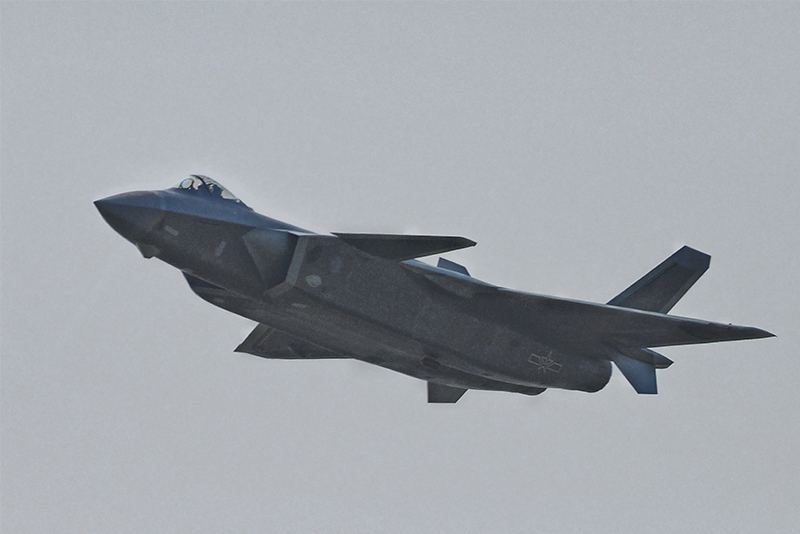
Unverified imagery being circulated on Chinese social media have indicated that aerospace prime Chengdu Aircraft Industries Company (CAC) have successfully test-flown a new variant of the J-20 stealth fighter with two new indigenously developed Shenyang Woshan-15 (WS-15) turbofan engines for the first time.
Images purportedly linked to the test event, which is understood to have occurred on 28 June, have depicted a J-20 test aircraft with several visible physical changes, including a redesigned canopy.
The presence of thrust-vectoring control (TVC) paddles typically associated with the WS-15 engine nozzles could not be confirmed due to the low quality of the images and possibility of manipulation. CAC officials, however, were seen with a Chinese-language banner with the ‘15’ numeral, providing some circumstantial evidence that the flight test had indeed been that of the new powerplant.
Early production units of the J-20 are powered by Russian-made Saturn AL-31FN turbofan engines, although more recent units have been reportedly equipped with indigenously developed Shenyang WS-10 Taihang turbofan engines as an interim measure.
Performance specifications of the WS-15 have not been disclosed, although analysts believe that the thrust rating of the new engine would likely be well within the 150 kN- thrust class given the country’s desire to field next-generation aircraft propulsion systems that can rival the US-made Pratt & Whitney F119 engine. The latter is the world’s first production fifth-generation combat aircraft engine powering the Lockheed Martin F-22 Raptor.
Earlier in March, the Aero Engine Corporation of China (AECC) declared that the WS-15 engine has matured to production readiness.
Zhang Yong, project director at AECC’s Beijing Institute of Aeronautical Materials, said during the Seventh China Aviation Innovation and Entrepreneurship Competition (CAIEC) that from the institute has “addressed all bottlenecks” associated with the production of the WS-15 engine.
“The mass production of WS-10 and WS-15 [engines] delivery has been achieved. Materials screening and verifications have been finalised,” said Zhang. The event was documented by state-owned broadcaster to China Central Television (CCTV).
According to Zhang, indigenous advancements in metallurgy and production techniques have enabled the reliable manufacture and supply of super-high temperature components – such as single-crystal turbine blades, superalloy discs and rings, and fasteners – necessary for advanced propulsion systems.
by Jr Ng












